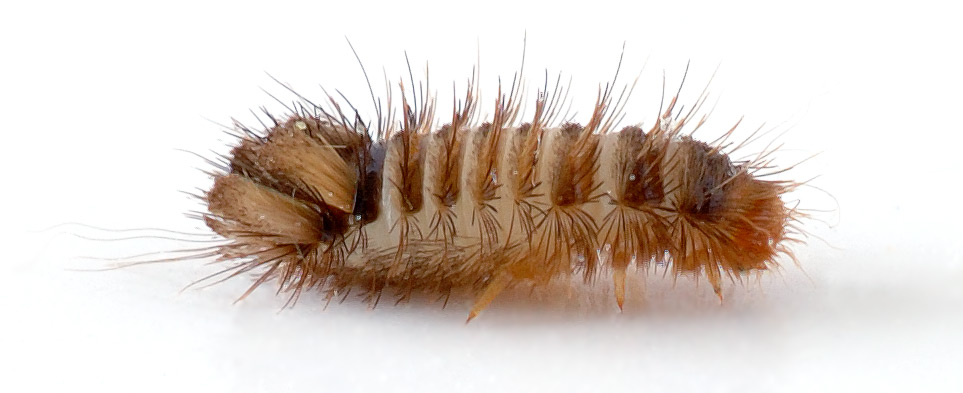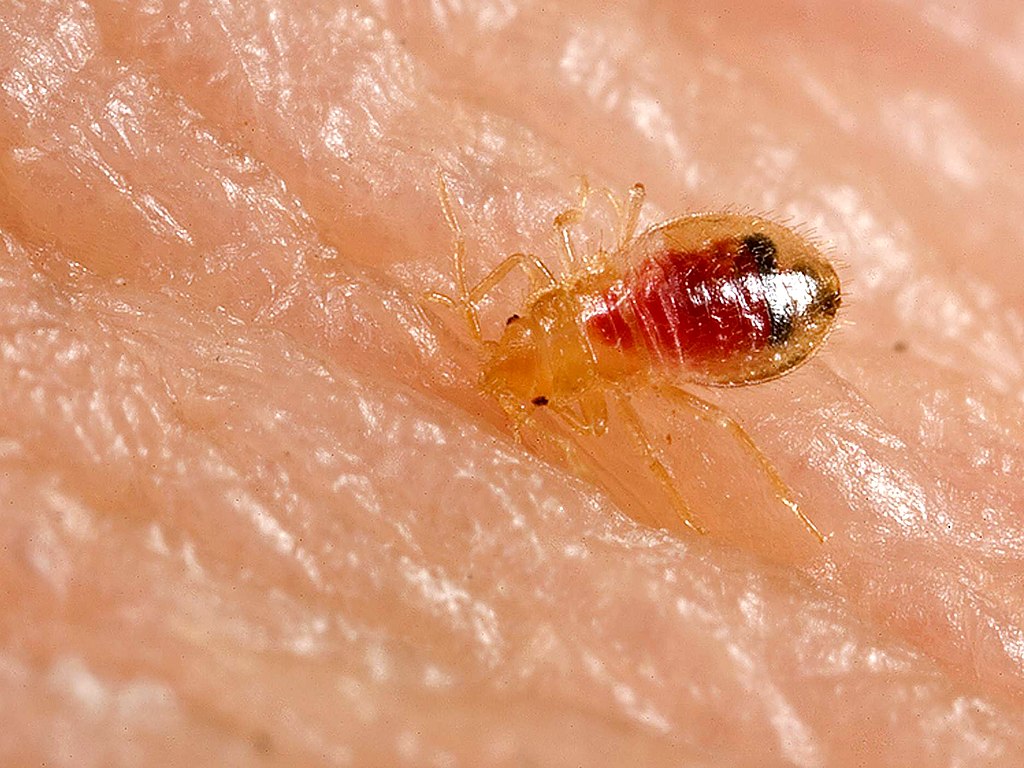In the world of household pests, carpet beetles and bed bugs are two common names that often cause confusion, probably because bed bugs live in beds while carpet beetles eat natural fabrics (such as bedding) Despite this similarity, these two pests are entirely different in their behavior, appearance, and the threats they pose. In this article, we will explore the key differences between carpet beetles and bed bugs to help you better understand these pests.
Appearance and Size:
One of the primary distinctions between carpet beetles and bed bugs lies in their appearance and size:
Carpet beetles
Carpet beetles are small, oval-shaped insects that belong to the family Dermestidae.
Adult carpet beetles measure around 1.5 to 4mm in length, depending on the species.
They come in various colours and patterns, such as white, black, brown, and orange scales.


Bed bugs
Bed bugs, on the other hand, are small, reddish-brown insects belonging to the family Cimicidae.
Adult bed bugs are slightly larger than carpet beetles, typically measuring about 4 to 5mm in length.
They have a flattened, oval-shaped body and are reddish-brown in color.


Feeding habits:
The most significant difference between these pests lies in their feeding habits:
Carpet Beetles
Carpet beetles are not blood-feeders; instead, they are considered scavengers.
Their primary diet consists of natural materials like wool, silk, cotton, fur, feathers, and dead insects.
They feed on carpets, rugs, clothing, upholstery, and other household items made from these materials. Carpet beetles do not bite humans, but the carpet beetle caterpillars have hairs that can cause skin irritation in rare cases .
Bed Bugs
Bed bugs, on the other hand, are obligate blood-feeders, meaning they require a blood meal to survive and reproduce.
They feed exclusively on the blood of warm-blooded animals, in particular humans.
Bed bugs are nocturnal and typically feed at night while their hosts are asleep.
Behaviour and Habitat:
Carpet Beetles
Carpet beetles can be found both indoors and outdoors, as they are attracted to pollen and nectar from flowers when outdoors.
Indoors, they infest homes, especially in areas with a high concentration of natural fibres and fabrics.
They often hide in dark, undisturbed areas, such as closets, attics, and under furniture.
Bed Bugs
Bed bugs are entirely indoor pests and are highly skilled at hitchhiking into homes through luggage, clothing, and furniture.
They tend to hide in cracks and crevices near their human hosts, such as mattress seams, bed frames, and headboards.
Bed bugs are known for their ability to adapt to various environments and can infest homes, hotels, and other places where humans live or frequent.
Health Risks:
While carpet beetles and bed bugs have different feeding habits, both can cause some health concerns:
Carpet Beetles
Carpet beetles are not known to transmit diseases to humans.
However, their larvae have tiny bristles or hairs that can cause skin irritation upon contact with sensitive skin. This is not very common and it’s not intentional.
Bed Bugs
Bed bugs are not known to transmit diseases directly to humans either.
However, their bites often cause skin reactions, including redness, itching, and swelling, in some individuals.
Prevention and Control:
Preventing and controlling infestations of carpet beetles and bed bugs require different approaches:
Carpet Beetles
To prevent carpet beetle infestations, keep your home clean and free from clutter.
Store fabrics and clothing properly, and regularly vacuum carpets and upholstery to remove debris and potential food sources.
High heat of over 50 degrees Celsius will kill carpet beetles. There are also a variety of natural and chemical solutions which you can read about here.
Bed Bugs
Preventing bed bug infestations involves being vigilant and cautious when traveling, or buying second-hand furniture. Bed bugs are transmitted by humans in luggage or clothing
Regularly inspect your home for signs of bed bugs, such as tiny reddish-brown bugs, blood stains, bites, or dark fecal spots.
Getting rid of bed bugs is pretty much impossible without professional help because these hardy insects are very difficult to find and often they are immune to pesticides. Pesticides won’t kill their eggs either. You’ll need professionals with sniffer dogs to get rid of bed bugs.

